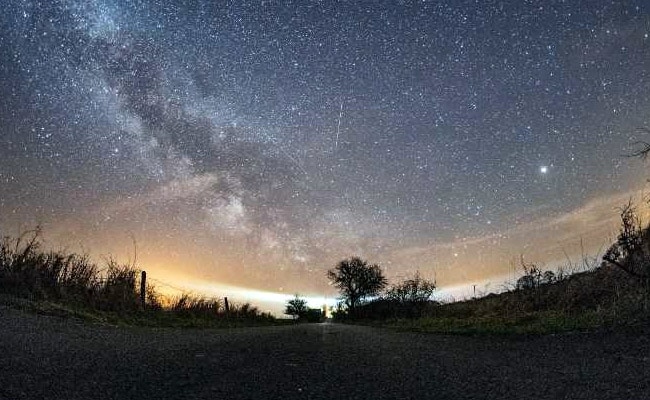Lyrid Meteor Shower Begins This Weekend, Know When Can You See It

The celestial spectacle will be visible from April 15 to April 29
Skygazers are in for a treat, as the annual Lyrid Meteor shower will be visible across the night sky as early as April 15, Saturday. The celestial spectacle will be visible from April 15 to April 29 and will peak on the night of April 21 and April 22, 2023, according to NASA.
During the peak, skywatchers can expect to highest numbers of shooting stars in the late-night hours of April 21 and it will continue into the early, pre-dawn hours of April 22.
Viewers can expect to see about 18 meteors per hour, Smithsonian magazine revealed. Peter Veres, a research scientist at the Harvard-Smithsonian Center for Astrophysics’ joint organization with the Minor Planet Center told the magazine that the Lyrids won’t number as many as the famed summer Perseids, but the shower is still notable-the Lyrids are one of just about ten meteor showers that yield more than ten meteors per hour at their height.
According to EarthSky.org, the best viewing time will come just before dawn, which is the darkest. However, the 2023 Lyrid meteor shower may be visible in the sky as early as 10:30 p.m. on the nights that it peaks.
According to NASA, the Lyrids are known for their fast and bright meteors. Lyrids don’t tend to leave long, glowing dust trains behind them as they streak through the Earth’s atmosphere, but they can produce the occasional bright flash called a fireball.
The Lyrid meteors according to NASA have been observed for the last 2,700 years and are well known to leave behind glowing dust trails and streaks in the night sky as they pass through. Named after the Lyra constellation of stars, the meteors are part of a debris field left behind by Comet Thatcher which is currently hurtling through the solar system away from the Sun. It will reverse its trajectory in another 45 years. The comet is classified as a long-period comet and it takes it 415 years to orbit the sun once.
For all the latest world News Click Here
